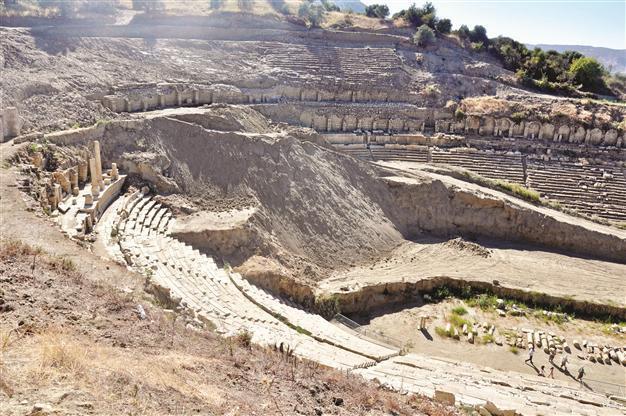Ancient sportsmen took doping too, findings show
AYDIN - Anadolu Agency

Excavations at a historic stadium area in the ancient city of Magnesia suggest that athletes had used performance-enhancing potions 2,000 years ago. It was not only permitted, but also a celebrated practice. AA Photos
Alarge number of Turkish and international athletes recently banned for doping might have been born just 2,000 years too late, according to new archaeological findings in the Aegean province of Aydın that suggest using performance-enhancing drugs in ancient Greece was not only permitted but celebrated.
Locals living in the ancient city of Magnesia produced potions from the mood-altering plant mandrake, researchers have said, noting that their involvement with the drug gave them pride of place.
“Part of the [local] stadium was allocated for people who came from the ancient city of Ephesus. It is also observed that some political groups as well as bakers, gardeners, bird sellers had combined tickets. A tablet shows the most important part of the stadium, which has a capacity of 60 persons, was spared for a group of people called ‘Mandragoreitoi,’” said Turkish Professor Orhan Bingöl, who is leading archaeological excavations at the site, located in Aydın’s present-day district of Gemencik, noting that the Mandragoreitoi produced mandrake, the genus of which is mandragora. “That indicates that doping was not a crime back then, but rather that those who produced that substance had a special place in society and were encouraged.”
Bingöl also said reliefs on the podiums at the stadium provided information about the awards given to athletes and sportsmen in ancient times, noting that competitions were divided into three categories, gymnastics, riding and music.
 Symbolic crown
Symbolic crown “The competition categories written on the tablets are also seen in the reliefs. We see in these reliefs that successful athletes symbolically wore a crown and carried palm tree leaves. One of the awards is pretty interesting. Successful athletes were also awarded with a bundle of clothes. It shows us that clothes were more important than money at this time,” Bingöl said.
The professor said they had so far unearthed reliefs at only four parts of the stadium. “This year we have a chance to make detailed work thanks to an allocation by the Directorate of Cultural Beings and Museums. When all the reliefs are unearthed, we will have some 125 reliefs in total and get more information about the competitions in Magnesia.”
The stadium in Magnesia had a capacity of over 40,000, but the site only came to light after experts removed tens of thousands of cubic meters of earth.
The first excavations at the archaeological site were performed in 1891 and 1893 by a German archaeological team. However, since 1985, the Magnesia excavation has been conducted by Ankara University.
The ancient city of Magnesia was registered as a “1st Degree Archaeological Protected Area” by a decision from İzmir’s 2nd Committee for the Protection of Cultural and Natural Heritage.

 Symbolic crown
Symbolic crown